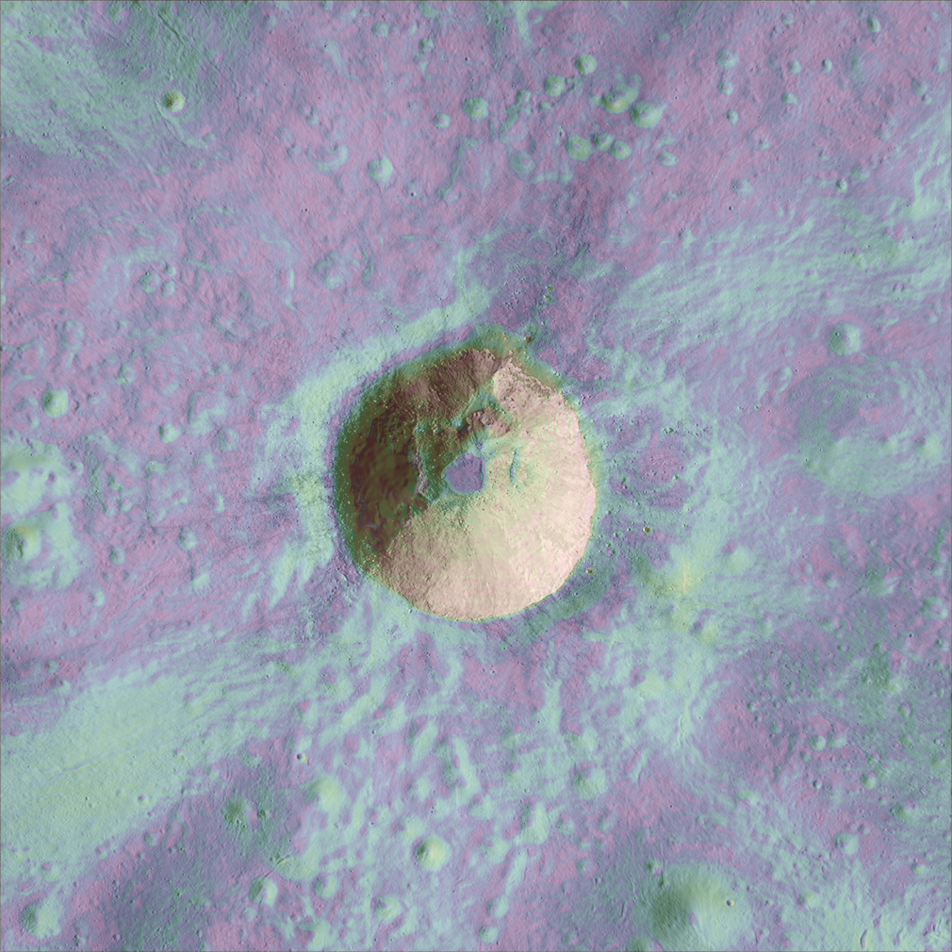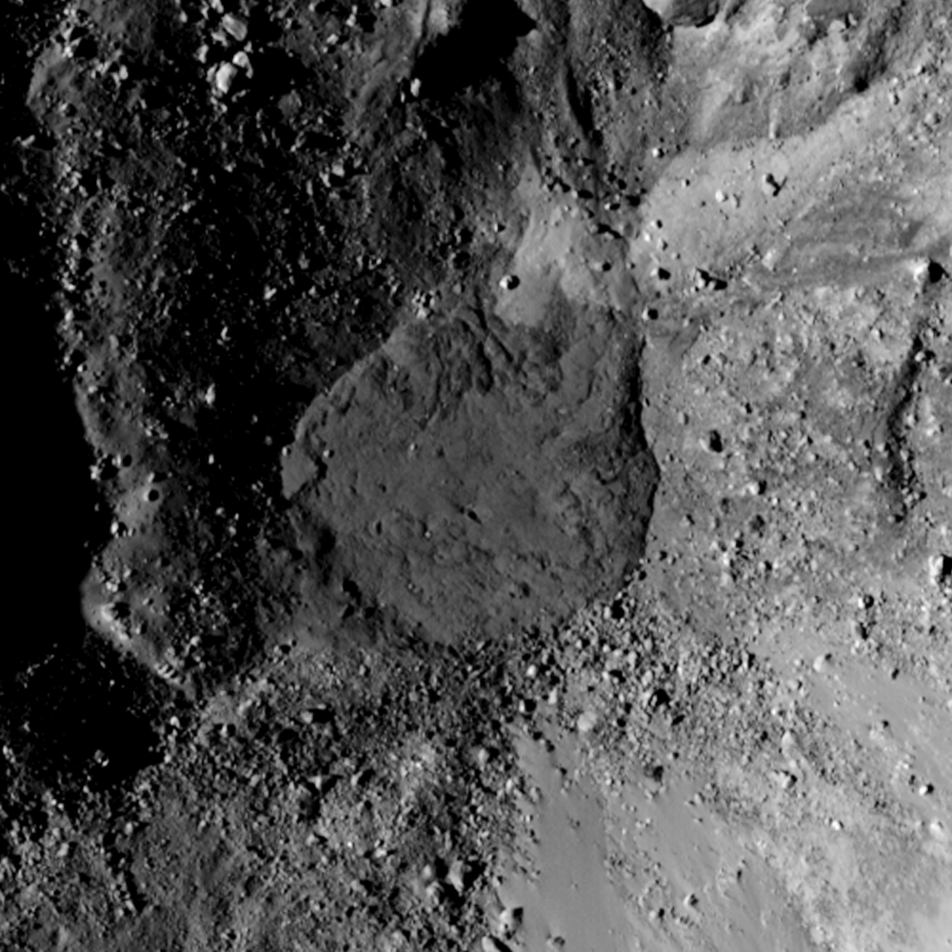
Meteorites and comets (typically impacting at high velocities) transfer their kinetic energy to the surface upon contact. This energy is partially used to excavate the crater cavity and compress materials at the target. Impactors also frequently generate a large volume of heat in the area around the impact site. This heat can melt host rock. Some of the melted rock inside the crater gets pushed out over the rim; other melt flows back towards the floor once the crater has formed. The melted rock can have a range of temperatures and viscosities that affect its flow behavior.

Viscous liquids are typically thick, sticky, and resistant to flow (like room-temperature honey). Liquids generally increase in viscosity at lower temperatures (like honey stored in the refrigerator). Similarly, cooler melts are also more viscous than hotter melt and will resist flow. Melted rocks cool primarily through radiation on airless bodies like the Moon. But melted rock can also cool rapidly through mixing with colder, unmelted clasts picked up along the crater walls or from ejecta. LROC images show that impact melt deposits exhibit a variety of forms ranging from thin and broad to thick and narrow, suggesting a variety of temperatures and viscosities.
A number of previous posts explored viscous melt flow on the rims of fresh craters: Splash and Flow, Rootless Impact Melt Flows, Thin Dark Layer. However, the lobate margins and pressure ridges of the impact melt inside some craters like the one above (located at 179.422°E, 3.352°N) suggest that melt along the crater walls was highly viscous, likely cooling as it mixed with lower temperature debris.
The variety of impact melt deposit morphologies seen at lunar craters reflects impact parameters (such as impactor velocity, size, and angle) and target properties (such as porosity). By studying a large number of these deposits, lunar scientists hope to better understand the details of the impact cratering process, surface properties, and impactor populations.
Pan and zoom to explore the whole crater below. See if you can identify other deposits of impact melt around the crater rim.
Explore these other fascinating melt pond morphologies:
Published by J. Stopar on 15 April 2016